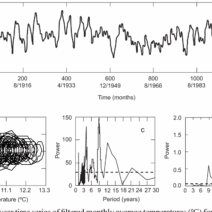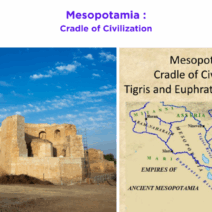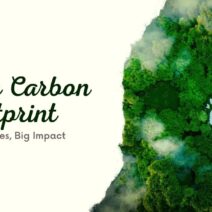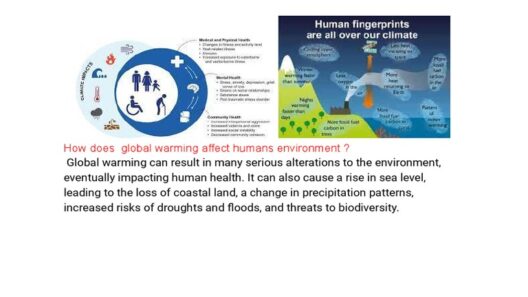To comprehend the foundational tenets of climate science, one must grapple with the intricacies of global warming and the inexorable link to human activities. The scientific community has conducted extensive research, revealing irrefutable evidence that humanity’s impact on the climate is substantial and pervasive. This exploration into the nexus between human enterprise and climate change invokes a shift in perspective that not only piques curiosity but also elucidates the urgency of addressing this existential challenge.
Global warming primarily refers to the long-term increase in Earth’s average surface temperature due to the accumulation of greenhouse gases (GHGs) in the atmosphere. These gases, including carbon dioxide (CO2), methane (CH4), and nitrous oxide (N2O), are a natural part of the Earth’s atmospheric composition, but their concentrations have surged alarmingly due to anthropogenic activities, primarily since the Industrial Revolution. This increase in GHGs enhances the natural greenhouse effect, trapping more heat and consequently leading to climate change.
The principal driver of this phenomenon is the burning of fossil fuels—coal, oil, and natural gas—which releases vast amounts of CO2. This act not only contributes to air pollution but also disrupts climatic equilibrium. Deforestation, industrial processes, and agricultural practices also contribute significantly to this ecological dilemma. Indeed, according to scientific assessments conducted by numerous esteemed organizations, including the Intergovernmental Panel on Climate Change (IPCC), the overwhelming consensus is that recent temperature rises cannot be explained by natural causes alone.
Through meticulous studies involving ice cores, sediment samples, and contemporary climate data, scientists demonstrate an undeniable trend of increasing temperatures correlating directly with industrialization. The rapid escalation of atmospheric CO2 levels from approximately 280 parts per million in pre-industrial times to over 400 parts per million today is not merely a statistical anomaly; it is a poignant illustration of humanity’s environmental footprint. Such data underscore the substantial deviation in climate patterns observed over a mere century compared to the millennia of relatively stable climate conditions preceding it.
Moreover, climate models have burgeoned into vital tools for deciphering the complexities of climate interactions. These models project a continuum of future scenarios contingent upon varying levels of GHG emissions, allowing scientists and policymakers alike to discern potential outcomes should current trajectories persist. They unequivocally indicate that without immediate action to curtail emissions, the planet could witness catastrophic effects, including more frequent and severe heatwaves, intensified storms, and accelerated sea-level rise. Such outcomes imperil not only the environment but also human livelihoods and health, signaling a critical juncture in our interaction with the planet.
The implications of human-induced global warming extend beyond mere statistics; they manifest in real-world phenomena observable across the globe. Recent climatic events—wildfires in Australia, hurricanes in the Caribbean, and unprecedented heatwaves in Europe—serve as potent reminders of our increasingly volatile climate. These events carry profound socio-economic ramifications, especially for vulnerable populations who lack the resources to adapt or recover from such disasters. Thus, the conversation surrounding global warming is not only scientific; it is intrinsically tied to issues of equity and justice.
Addressing climate change necessitates a multifaceted approach that incorporates innovation, sustainability, and community engagement. Transitioning to renewable energy sources—such as wind, solar, and hydroelectric power—emerges as a salient strategy to mitigate emissions. Countries around the globe are increasingly committing to targets for carbon neutrality, advocating for technologies that promote energy efficiency and sustainable practices. These efforts signify an invigorating pledge to reshape the global economy towards a more sustainable model.
Crucially, individual and collective actions play indispensable roles in this transformative process. The power of grassroots movements, fueled by awareness and activism, cannot be understated. As citizens become empowered to demand policy changes and corporate accountability, they reinforce the fact that collective will can drive significant change. Education and advocacy serve as catalysts for a burgeoning climate movement, cultivating an informed populace ready to engage in sustainable practices and policies.
Ensemble, scientific investigations, advocacy, and policy initiatives underscore the profundity of humanity’s responsibility towards the planet. It is evident that the evidence amassed over decades of research lays bare the connection between human activities and climate change. From the minutiae of daily habits to the geopolitical complexities of energy resources, each decision contributes to the broader narrative of our environmental impact.
The synthesis of scientific knowledge with actionable strategies invites a paradigm shift—a perspective wherein climate change is perceived not solely as an insurmountable challenge but as an opportunity for innovation and collaboration. This juncture compels us to reimagine our relationship with the Earth—embracing sustainability as a cornerstone of modern civilization.
In summary, the scientific community has irrefutably proven humanity’s impact on global warming. The confluence of empirical evidence and the urgency of climate action not only questions our current trajectory but also beckons us towards sustainable solutions. The question is no longer if climate change is real; it is about the choices we make today to ensure a viable planet for future generations. In embracing this understanding, we can forge a path towards a more sustainable and equitable world. The clock is ticking, and the time is now for decisive action.








